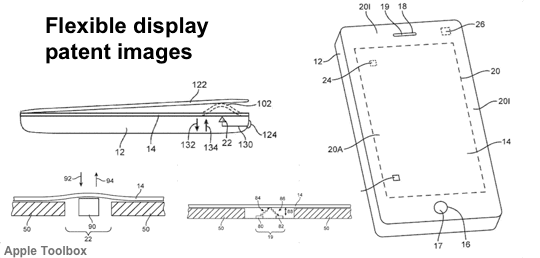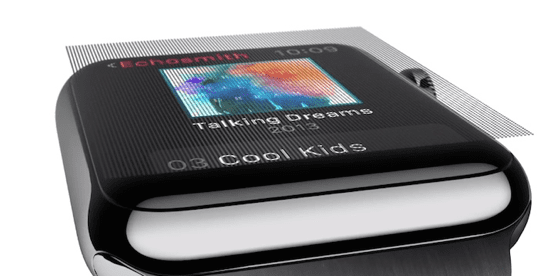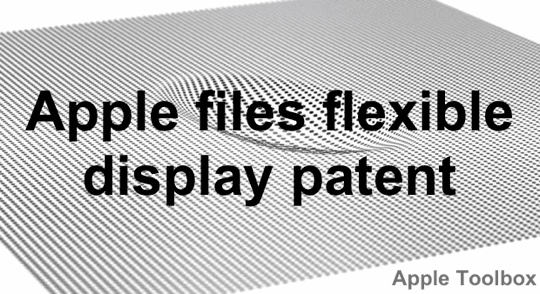Apple filed a patent today with the United States Patent and Trademark Office (USPTO) for a flexible display which deforms when touched. Underneath the display could are a range of sensors and actuators that may temporarily or permanently deform to provide tactile feedback to the user.
The patent application entitled “Electronic Devices With Flexible Displays”, was one of more than 153 submitted by Apple. Discovered by Apple Toolbox today, it appears related to the forthcoming Apple Watch, although it’s clear that the concept could also be used in other products in the company’s lineup. In fact, the images in the patent application also show a representation of an iPhone and a MacBook.
Among the claims in the patent are: “An electronic device, comprising; a display having a flexible substrate and an array of display pixels formed on the flexible substrate; and an electrical component mounted behind the flexible substrate, wherein the electrical component gathers user input by detecting a deformation of the flexible substrate and wherein the flexible substrate transitions from a flat configuration to a deformed configuration during the deformation”.
Flexible display with sensors and actuators beneath the surface

The invention also goes onto describe electrical components under the surface, where the component comprises a button which is actuated when the user applies pressure to the screen. Perhaps more interesting however is the description of a microphone enclosed beneath the surface which picks up external sound waves through the screen (and in fact that microphone was also described as a laser microphone) which has the advantage that the external ports and buttons could all be completely enclosed.
Several internal components are in fact mentioned: an actuator such as a motor, solenoid, vibrator, or piezoelectric actuator, a pressure sensor, an audio component such as a microphone or speaker.
Components may receive input or may supply output through a physically deformed portion of the flexible display…a portion of the flexible display may serve as a membrane that forms part of a microphone, speaker, pressure sensor, or other electronic component.
Protecting input-output components
The author states that “openings are commonly formed in the housing of a conventional device to accommodate operation of these input-output components. For example, openings may be formed in a device housing to accommodate speaker and microphone ports and openings may be formed in a display cover glass layer to accommodate a speaker port and menu button”, and goes on to state that such openings may not be desirable (due to being not aesthetically pleasing and the risk of damage from environmental exposure).
Besides the Apple Watch (where the concept is called Force Touch), such a flexible display may be well suited to a future iPhone, in order to embed some of the sensors beneath the display, or to wrap more of the iPhone in glass. The technology already looks like it’s being adopted in the watch, so it will be interesting to see whether Apple extends the idea to other devices.

Patent Credits
Apple credits Fletcher Rothkopf (Los Altos, CA), Scott Myers (San Francisco, CA) and Stephen Brian Lynch (Portola Valley, CA) of the inventors of U.S. patent application number 20140362020.
You can read more about the Apple Watch on Apple Toolbox here, in addition to other display patents in this article.
